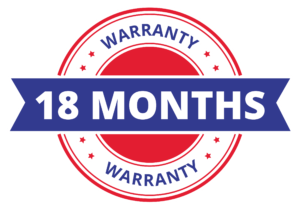If you’re planning to buy a car in 2026, setting financial goals now can help you secure a better loan, lower interest rates, and a more affordable monthly payment. Whether you’re looking to finance through a bank, credit union, or Buy Here Pay Here (BHPH) dealership, careful financial planning can make the car-buying process easier and more affordable.
This guide will help you set realistic financial goals so you can buy a car in 2026 without financial stress.
Step 1: Determine Your Budget and Target Price
Start by estimating how much you can afford to spend on a car, including:
- Monthly payment – Should be no more than 15% of your take-home pay.
- Down payment – Aim for at least 10-20% of the car’s price.
- Insurance and maintenance costs – Budget for fuel, oil changes, and unexpected repairs.
Example Budget Planning:
| Monthly Income | Max Car Payment (15%) | Recommended Down Payment (10%) |
|---|---|---|
| $3,000 | $450 | $2,000 |
| $4,000 | $600 | $3,000 |
| $5,000 | $750 | $4,000 |
Pro Tip: Keep total car-related expenses under 20% of your monthly income to maintain financial flexibility.
Step 2: Improve Your Credit Score (If Needed)
A higher credit score can get you better loan terms and lower interest rates.
- Check your credit score at Experian, Equifax, or TransUnion.
- Pay off any high-interest debts to lower your debt-to-income ratio.
- Make on-time payments on all bills, including current auto loans or credit cards.
- Avoid applying for new credit cards or loans six months before financing a car.
If you have bad credit or no credit, consider alternative financing options like BHPH dealerships, which offer in-house financing with no credit check.
Step 3: Start Saving for a Down Payment
A larger down payment reduces the total loan amount and lowers your monthly payment.
- Set up a separate savings account for your car fund.
- Use automatic deposits to save a fixed amount each month.
- Reduce non-essential expenses (such as eating out or subscriptions) to boost savings.
Example Savings Plan for a $3,000 Down Payment by 2026:
| Months to Save | Monthly Savings Goal | Total Savings |
|---|---|---|
| 12 months | $250 | $3,000 |
| 18 months | $167 | $3,000 |
| 24 months | $125 | $3,000 |
Step 4: Research the Best Financing Options
There are multiple ways to finance a car, each with different advantages.
1. Traditional Auto Loans (Bank or Credit Union)
- Best for buyers with good credit.
- Lower interest rates than dealership financing.
- May require higher down payments.
2. Buy Here Pay Here (BHPH) Financing
- Ideal for buyers with bad credit or no credit history.
- In-house financing with no credit check required.
- Often has higher interest rates, but offers fast approvals.
3. Leasing vs. Buying
- Leasing may be an option if you prefer lower monthly payments but don’t mind not owning the car.
- Buying is better for long-term savings since you own the car after paying off the loan.
Step 5: Plan for Trade-In or Selling Your Current Car
If you already own a car, trading it in or selling it privately can help with your next purchase.
- Check your car’s value using Kelley Blue Book (KBB) or Edmunds.
- Consider selling privately to get a higher price.
- If trading in, get multiple dealership quotes before accepting an offer.
Step 6: Monitor Used Car Market Trends
The car market changes over time, so staying informed can help you buy at the right time.
- Keep an eye on used car prices in your area.
- Research fuel-efficient and reliable models with lower maintenance costs.
- Consider buying during seasonal discounts, such as year-end clearance sales.
Final Thoughts
Setting financial goals now will help you buy a car in 2026 without financial stress. By improving your credit, saving for a down payment, and researching financing options, you can get the best deal and avoid overpaying.
If you’re looking for affordable car financing with flexible payment options, check out our Buy Here Pay Here dealership options today.









